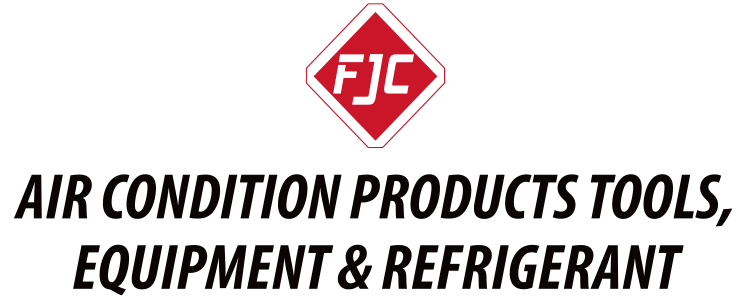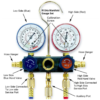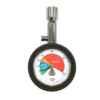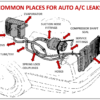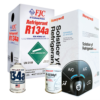A/C Inspection Checklist
The following checklist for inspecting an automotive A/C system has been developed from the recommendations of the Mobile Air Conditioning Society (MACS)

An annual A/C inspection is recommended, ideally during the Fall or Spring seasons. Many use the change to or from Daylight Saving Time as an inspection reminder.
Note: Always use extreme caution when under the hood with the engine running. Use hand and eye protection, and take care to stay away from all rotating components.
| (1) Check Compressor clutch. With the engine running, does the compressor clutch engage when the A/C is on? If not, it may indicate a low (or empty) refrigerant charge or an electrical problem. | |
| (2) Listen for rapid clicking or cycling noises at the compressor. This could also be indicative of low refrigerant or another problem. | |
| (3) Check whether the A/C is blowing cold air. If not, you may have a low refrigerant charge in the system. Pressure gauges can be used to check the charge. If it’s low, add the proper refrigerant for your system to bring it to full charge. | |
| (4) Listen for knocking or rumbling sounds near the compressor, with the engine running and the A/C “off”. These could indicate a failing compressor clutch and/or loose mounting hardware. | |
| (5) Check whether A/C component mounting bolts are in place and secured tightly. If not, tighten any loose or rattling bolts. | |
| (6) Ensure that caps are installed on the A/C service ports. These are needed to seal the refrigerant and also to help keep out dirt. | |
| (7) Check all belts for cracks, wear and glazing. Have them replaced at the first sign of any of these conditions. | |
| (8) Check for belts that vibrate while the engine is running and A/C is on. This may indicate a defective automatic belt tensioner or the need to tighten the belt. | |
| (9) Examine all A/C and cooling system hoses for cuts, abrasions, weak spots or signs of leakage. Leakage is generally indicated by areas with an accumulation of dirt and oil, particularly at connections and fittings. | |
| (10) Ensure that the condenser is free from obstructions, such as leaves or insects. These could reduce airflow and diminish A/C performance. If there are obstructions, you can rinse the condenser with a garden hose to remove. |
LMK 2019

